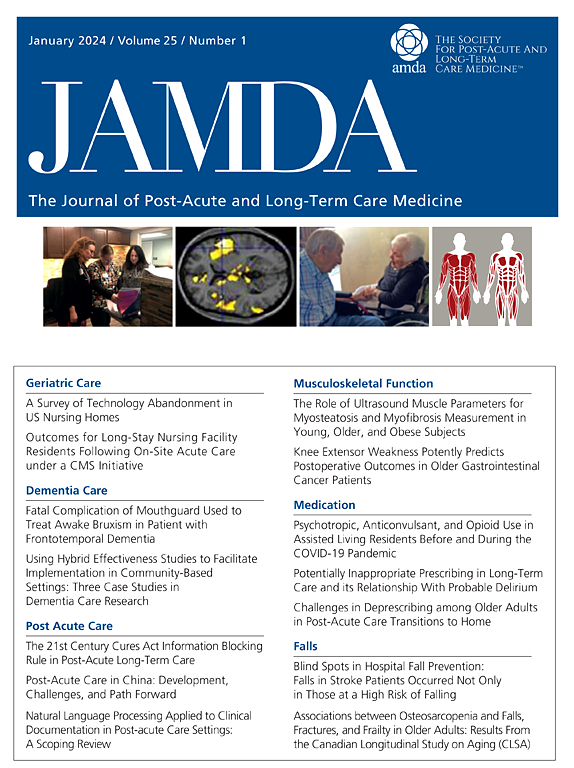Association of Reversible Frailty with All-Cause Mortality Risk in Community-Dwelling Older Adults and Analysis of Factors Affecting Frailty Reversal in Older Adults
IF 4.2
2区 医学
Q2 GERIATRICS & GERONTOLOGY
Journal of the American Medical Directors Association
Pub Date : 2025-03-11
DOI:10.1016/j.jamda.2025.105527
引用次数: 0
Abstract
Objectives
Although frailty can increase the risk of premature death, whether reversal of frailty reduces the risk of premature death and what factors contribute to the reversal of frailty have not been thoroughly investigated. This study aimed to investigate the link between frailty reversal and all-cause mortality and the factors affecting frailty reversal.
Design
A combination of the nested case-control study and the prospective cohort study.
Setting and Participants
Pre-frail and frail older adults in the community follow-up cohort of Dalang Town, Dongguan City.
Methods
We used a nested case-control study to enroll pre-frail and frail older individuals. After follow-up, we determined frailty-reversible and -irreversible groups. In a prospective cohort study with these 2 groups, all-cause death was set as the endpoint. We analyzed the link between frailty reversibility and all-cause mortality risk via incidence density ratios and Cox regression. Logistic regression was used to analyze factors affecting frailty reversibility.
Results
There were 637 (33.3%) participants who had a reversal of frailty status. Compared with the irreversible group, the reversible group had a 53.9% lower risk of all-cause mortality. Age, illiteracy, cigarette smoking, and daily sedentary time were negatively associated with the reversal of frailty in older adults. Hemoglobin concentration and having an exercise habit were positively associated with frailty reversal.
Conclusions and Implications
The risk of all-cause mortality declined among older adults with a reversal of frailty. Hemoglobin concentration and exercise contributed to the reversal of frailty among older adults. In contrast, aging, long daily sedentary time, cigarette smoking, and illiteracy were risk factors for the reversal of frailty. These findings may provide better strategies for frailty intervention.
求助全文
约1分钟内获得全文
求助全文
来源期刊
CiteScore
11.10
自引率
6.60%
发文量
472
审稿时长
44 days
期刊介绍:
JAMDA, the official journal of AMDA - The Society for Post-Acute and Long-Term Care Medicine, is a leading peer-reviewed publication that offers practical information and research geared towards healthcare professionals in the post-acute and long-term care fields. It is also a valuable resource for policy-makers, organizational leaders, educators, and advocates.
The journal provides essential information for various healthcare professionals such as medical directors, attending physicians, nurses, consultant pharmacists, geriatric psychiatrists, nurse practitioners, physician assistants, physical and occupational therapists, social workers, and others involved in providing, overseeing, and promoting quality

 求助内容:
求助内容: 应助结果提醒方式:
应助结果提醒方式:


